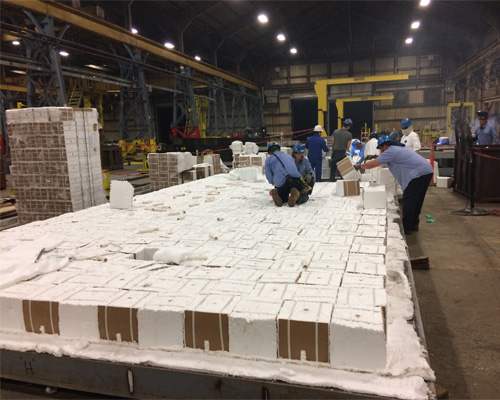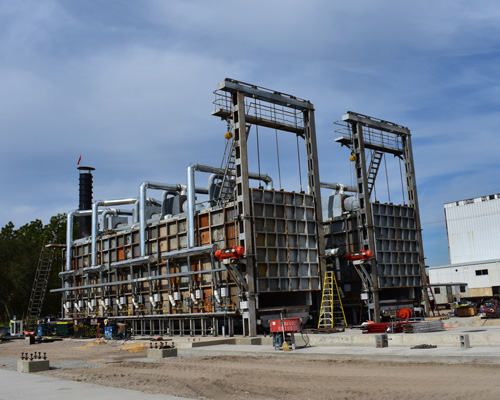Hardening of steel
Jul.04,2017
Hardening consists in heating to a temperature from 30℃ to 50℃ above AC3 for hypoeutectoid steels or above point ACcm for hypereutectoid steels ,holding unit the phase transformations are completed and then cooling at a rate above the critical. Such cooling is called quenching; carbon steels are commonly quenched in water, alloy steel, in oil or other media. Hardening by quenching is not a final heat-treatment. It must be followed by tempering to reduce brittleness and stress due to hardening, and obtain the required mechanical properties.
Tool steel is hardened and tempered mainly to increase its hardness, wear resistance and strength and structural steel, to increase its strength and hardness, and to obtain sufficiently high ductility and toughness, and for many kinds of machine components to provide high wear resistance as well .
Hypoeutectoid steels should be heated to a temperature 30℃ to 50℃ higher than point Ac3.This transforms the initial structure, consisting of pearlite and ferrite, into one of austenite which, upon cooling at a rate above the critical value (i.e. quenching), is transformed into martensite.
Hypoeutectoid steels are heated in hardening to a temperature somewhat above ACcm. At this temperature, austenite is formed, but a certain amount of secondary cementite is retained therefore. After quenching, the structure of the steel consists of martensite and undissolved carbon carbide particles, which are very hard. Thus, the hardened steel processes high hardness.
The heating time should be sufficient to heat the work throughout its cross section and to enable the phase transformations to be completed, but should not be so long that it leads to grain growth and decarburization of the surface layers of steel.
Quenching in hardening should enable a martensite structure to be obtained within the limits of the given cross section of the work (having a definite hardenability) and should not cause hardening defects: Cracks distortion, warping and high tensile residual stresses in the surface layers. It is most desirable to provide a high cooling (quenching) rate (above the critical quenching rate) in the temperature range from A1 to Ms to suppress super-cooled austenite decomposition in the regions of the pearlite and intermediate transformations, and slower cooling in the temperature range of martensite transformation, from Ms to Mf . A high cooling rate in the martensite temperature range is undesirable because it leads to a drastic increase in the level of residual stress and even to crack formation. At the same time excessively slow cooling in the temperature range from MS to Mf may lead to particle tempering of the martensite and to an increase in the amount of retained austenite, owing to its stabilization. This lowers the hardness of the steel.



